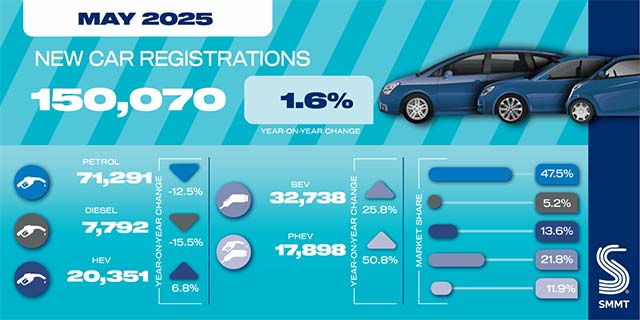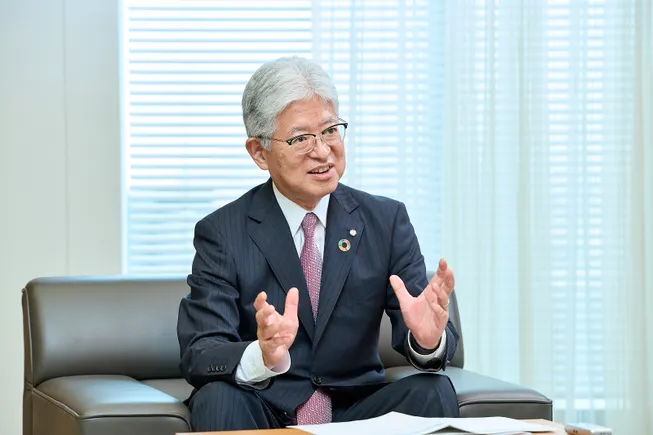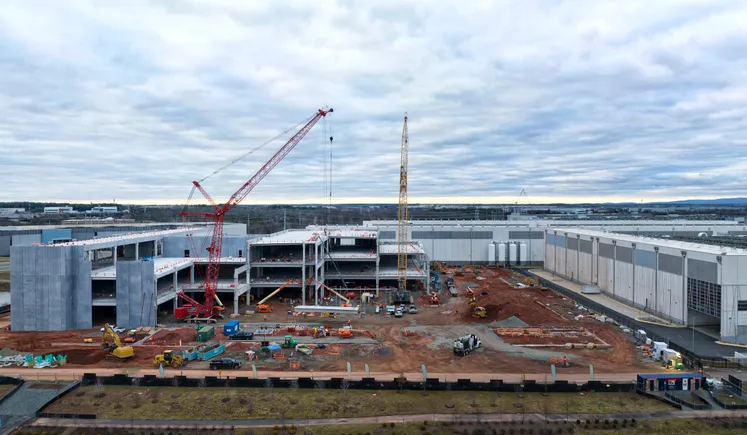AB InBev has confirmed that it cut 16% of its Budweiser workforce within the Asia-Pacific region last year.

According to company’s 2024 annual report, the APAC arm of the business employed just over 21,000 people by year-end, a figure that was down from approximately 25,000 in 2023.
The findings show a reduction of nearly 4,000 employees, or roughly 16% of those working for Budweiser APAC, according to reports via
Vino Joy.
Despite market rumours suggesting that Budweiser APAC had planned to slash operating costs by 15% in 2025, a move that would include thousands of layoffs, the company denied such actions and instead cited a response from headquarters stating that the claims of large-scale job cuts were not accurate, and that it remains committed to long-term investment in China.
Irrespective of these recent job cuts, Budweiser APAC still bills itself as the largest beer company in the region. Plus, in China the beer company manages both local and international brands including: Harbin, Budweiser, Hoegaarden, and Corona, with all distribution and channel operations said to be handled by Budweiser APAC.
Despite denying plans for further layoffs in 2025, it is clear that the 2024 staff reductions have already taken place.
In addition to workforce cuts, the Budweiser APAC arm has also undergone a leadership reshuffle. On 26 February, the board announced that CEO and co-chairman Jan Craps would step down and leave the company. Craps was succeeded by Yanjun Cheng, the company’s global chief supply chain officer, who officially assumed the role of CEO and co-chairman at the start of April.
Industry spectators have also reportedly interpreted the series of layoffs as a sign of pressure on the company’s performance. For instance, in 2024, Budweiser APAC reported revenues of US$6.246 billion, down 7% year-on-year. Alongside this, EBITDA came in at US$1.807 billion, showing a 6.3% decline.
The Chinese market, which once contributed more than 70% of company revenues, has witnessed a sharp downturn—with sales volumes falling 11.8% and revenue dropping 13%. Amongst this, price per hectolitre also is said to have slipped 1.4%, while market share declined by 1.49%.
The news of Budweiser APAC cutting its workforce has coincided with drinks giant
LVMH also recently announcing job cuts.
Similar cost-cutting measures are also taking place among domestic Chinese brewers, according to reports.
For instance, public disclosures have shown that in 2024, China Resources Beer and Yanjing Beer each let go of more than 1,000 employees, while Tsingtao Beer also reportedly cut 800 jobs.
The figures outline how China Resources and Tsingtao have seen revenues decline by 0.76% and 5.3% respectively, with China Resources’ net profit down 8.03%.
In the region, only Yanjing Beer is said to have managed to grow both revenue and profit during the fiscal year.
A decade ago, China’s beer market was dominated by a few major domestic players, but since 2014, the influx of imported beers has answered demand alongside reshaping consumer preferences for tasty imported brews.
In recent years, the rise of instant retail platforms like Freshippo and Pop Mart and alcohol delivery apps such as Waima Wine and Jiu Xiaoer, have also helped to boost private-label and indie craft beer brands, further fragmenting the market.

 According to company’s 2024 annual report, the APAC arm of the business employed just over 21,000 people by year-end, a figure that was down from approximately 25,000 in 2023.
The findings show a reduction of nearly 4,000 employees, or roughly 16% of those working for Budweiser APAC, according to reports via Vino Joy.
Despite market rumours suggesting that Budweiser APAC had planned to slash operating costs by 15% in 2025, a move that would include thousands of layoffs, the company denied such actions and instead cited a response from headquarters stating that the claims of large-scale job cuts were not accurate, and that it remains committed to long-term investment in China.
Irrespective of these recent job cuts, Budweiser APAC still bills itself as the largest beer company in the region. Plus, in China the beer company manages both local and international brands including: Harbin, Budweiser, Hoegaarden, and Corona, with all distribution and channel operations said to be handled by Budweiser APAC.
Despite denying plans for further layoffs in 2025, it is clear that the 2024 staff reductions have already taken place.
In addition to workforce cuts, the Budweiser APAC arm has also undergone a leadership reshuffle. On 26 February, the board announced that CEO and co-chairman Jan Craps would step down and leave the company. Craps was succeeded by Yanjun Cheng, the company’s global chief supply chain officer, who officially assumed the role of CEO and co-chairman at the start of April.
Industry spectators have also reportedly interpreted the series of layoffs as a sign of pressure on the company’s performance. For instance, in 2024, Budweiser APAC reported revenues of US$6.246 billion, down 7% year-on-year. Alongside this, EBITDA came in at US$1.807 billion, showing a 6.3% decline.
The Chinese market, which once contributed more than 70% of company revenues, has witnessed a sharp downturn—with sales volumes falling 11.8% and revenue dropping 13%. Amongst this, price per hectolitre also is said to have slipped 1.4%, while market share declined by 1.49%.
The news of Budweiser APAC cutting its workforce has coincided with drinks giant LVMH also recently announcing job cuts.
Similar cost-cutting measures are also taking place among domestic Chinese brewers, according to reports.
For instance, public disclosures have shown that in 2024, China Resources Beer and Yanjing Beer each let go of more than 1,000 employees, while Tsingtao Beer also reportedly cut 800 jobs.
The figures outline how China Resources and Tsingtao have seen revenues decline by 0.76% and 5.3% respectively, with China Resources’ net profit down 8.03%.
In the region, only Yanjing Beer is said to have managed to grow both revenue and profit during the fiscal year.
A decade ago, China’s beer market was dominated by a few major domestic players, but since 2014, the influx of imported beers has answered demand alongside reshaping consumer preferences for tasty imported brews.
In recent years, the rise of instant retail platforms like Freshippo and Pop Mart and alcohol delivery apps such as Waima Wine and Jiu Xiaoer, have also helped to boost private-label and indie craft beer brands, further fragmenting the market.
According to company’s 2024 annual report, the APAC arm of the business employed just over 21,000 people by year-end, a figure that was down from approximately 25,000 in 2023.
The findings show a reduction of nearly 4,000 employees, or roughly 16% of those working for Budweiser APAC, according to reports via Vino Joy.
Despite market rumours suggesting that Budweiser APAC had planned to slash operating costs by 15% in 2025, a move that would include thousands of layoffs, the company denied such actions and instead cited a response from headquarters stating that the claims of large-scale job cuts were not accurate, and that it remains committed to long-term investment in China.
Irrespective of these recent job cuts, Budweiser APAC still bills itself as the largest beer company in the region. Plus, in China the beer company manages both local and international brands including: Harbin, Budweiser, Hoegaarden, and Corona, with all distribution and channel operations said to be handled by Budweiser APAC.
Despite denying plans for further layoffs in 2025, it is clear that the 2024 staff reductions have already taken place.
In addition to workforce cuts, the Budweiser APAC arm has also undergone a leadership reshuffle. On 26 February, the board announced that CEO and co-chairman Jan Craps would step down and leave the company. Craps was succeeded by Yanjun Cheng, the company’s global chief supply chain officer, who officially assumed the role of CEO and co-chairman at the start of April.
Industry spectators have also reportedly interpreted the series of layoffs as a sign of pressure on the company’s performance. For instance, in 2024, Budweiser APAC reported revenues of US$6.246 billion, down 7% year-on-year. Alongside this, EBITDA came in at US$1.807 billion, showing a 6.3% decline.
The Chinese market, which once contributed more than 70% of company revenues, has witnessed a sharp downturn—with sales volumes falling 11.8% and revenue dropping 13%. Amongst this, price per hectolitre also is said to have slipped 1.4%, while market share declined by 1.49%.
The news of Budweiser APAC cutting its workforce has coincided with drinks giant LVMH also recently announcing job cuts.
Similar cost-cutting measures are also taking place among domestic Chinese brewers, according to reports.
For instance, public disclosures have shown that in 2024, China Resources Beer and Yanjing Beer each let go of more than 1,000 employees, while Tsingtao Beer also reportedly cut 800 jobs.
The figures outline how China Resources and Tsingtao have seen revenues decline by 0.76% and 5.3% respectively, with China Resources’ net profit down 8.03%.
In the region, only Yanjing Beer is said to have managed to grow both revenue and profit during the fiscal year.
A decade ago, China’s beer market was dominated by a few major domestic players, but since 2014, the influx of imported beers has answered demand alongside reshaping consumer preferences for tasty imported brews.
In recent years, the rise of instant retail platforms like Freshippo and Pop Mart and alcohol delivery apps such as Waima Wine and Jiu Xiaoer, have also helped to boost private-label and indie craft beer brands, further fragmenting the market. 



















































































































































